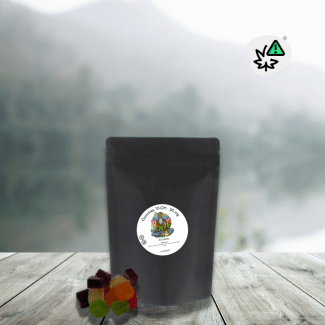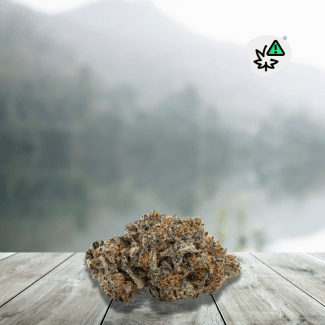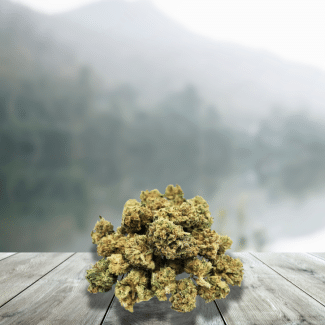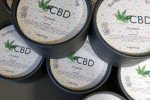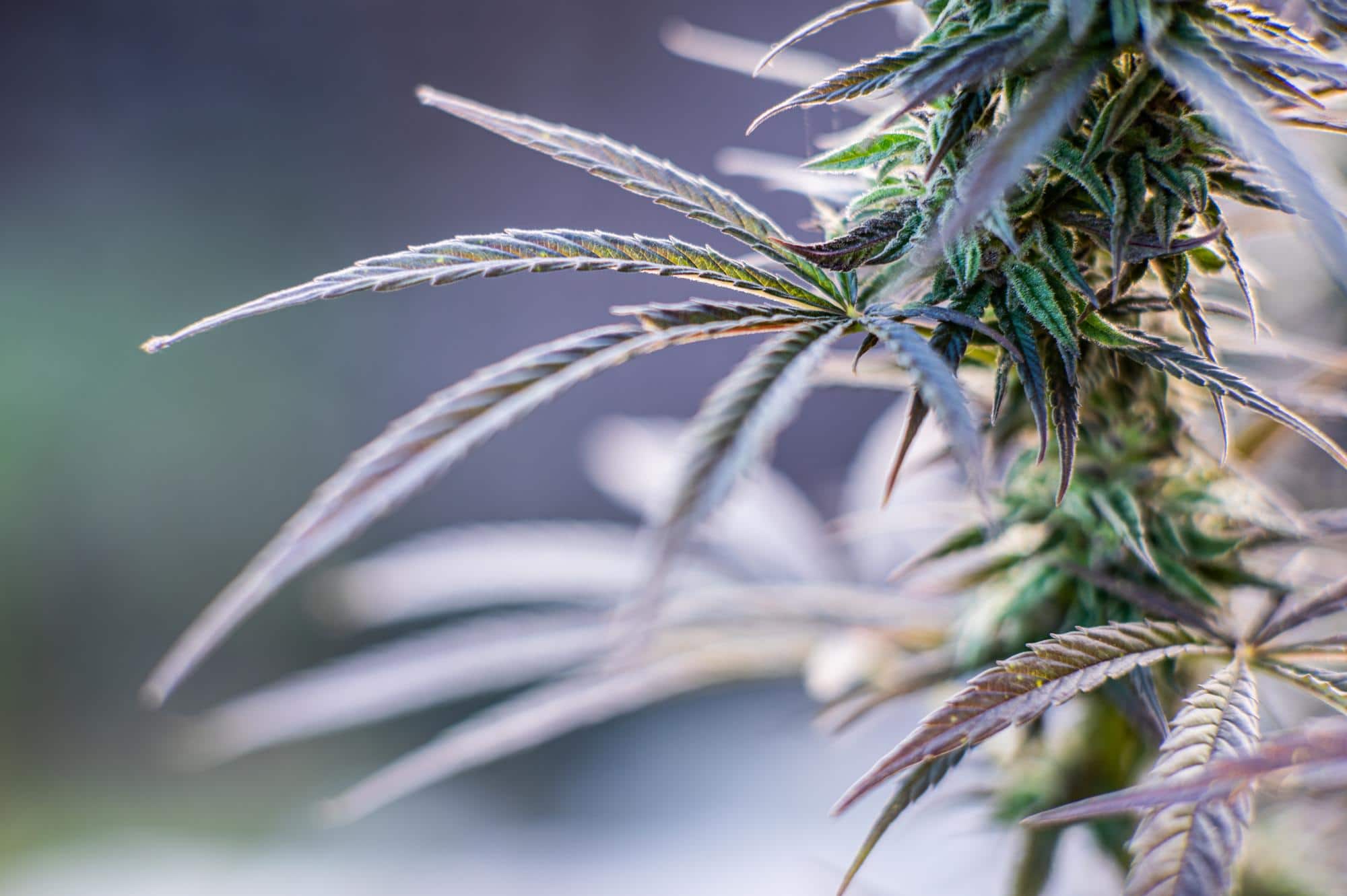
In the complex world of cannabis, a plethora of acronyms abound. You are undoubtedly familiar with THC, and since 2018, CBD has become an omnipresent topic. However, other lesser-known cannabinoids, such as CBN , CBC and CBG, are also looking to gain traction. Today, our focus is on CBDA, or to be more exact, cannabidiolic acid. What distinctions separate it from CBD, what impacts can we attribute to it and what do we really know about it? We address these questions without further delay.
What is CBDA?
So let’s dig deeper into CBDA. In its natural state, this compound is the acid precursor of cannabidiol , more commonly referred to as CBD. If we wish to refine it, it is the initial version of CBD that we find in abundance within the trichomes of the plant. These microspheres are the reservoirs of the resin and therefore of various substances such as cannabinoids, terpenes and flavonoids, which contribute in particular to the aromatic properties and certain effects of the plant.
As time passes, the plant degrades, dies or is harvested to be modified and then marketed. In synchrony a process called decarboxylation takes place. It is this biochemical sequence that facilitates the metamorphosis of CBDA into CBD. To put things in simple terms:
CBDA + thermal rise = CBD + carbon dioxide (CO2)
This spontaneous transmutation takes place when the plant dries up, is exposed to solar rays or undergoes combustion. Therefore, smoking, vaping, or cooking CBDA inevitably results in its conversion into CBD.
Legality of CBDA?
Regarding the legality of CBDA, French and European legislation, although they can sometimes be ambivalent, converge on at least one notion: THC, the psychoactive molecule of cannabis, is the only one explicitly prohibited. By extrapolation, CBDA is therefore considered in the same way as CBD, which makes it fully legal. Given the growing interest in this molecule and its potential effects, it is a safe bet that ultimately, legislative adjustments will provide a more precise framework for the exploitation and marketing of CBDA.
Differences between CBD and CBDA: Exploring their Acidic Nature
The transmutation of CBDA into CBD via combustion remains a method of consumption prohibited in France
Far from being a mystery to the majority, CBD embodies a vigorously active substance within cannabis. Naturally co-existing in marijuana plants, whether legal or not, CBDA serves as an acidic precursor to CBD, and undergoes decarboxylation to its neutral form.
This chemical process is not unique to CBD. Indeed, it also applies to other cannabinoids, such as THCA which converts into THC, or CBGA which mutates into CBG. This is one of the reasons why the populace is primarily familiar with the neutral forms of these molecules, rather than with their original acidic states. Outside of fresh, direct extraction of cannabis juice, the opportunities to acquire these acidic variants remain minimal.
However, this acidic configuration has significant advantages compared to its neutral version. Currently, it is appreciated that:
- CBDA seems to affect the body more quickly than CBD, which, for its part, works mainly over a prolonged period.
- At a comparable dose, the effects induced by CBDA are more powerful than those generated by CBD.
- CBDA appears to exclusively target CB1 receptors of the endocannabinoid system (ECS), responsible for the nervous system, while CBD activates a broader range of receptors, including CB1 and CB2.

Therapeutic Potential of CBDA
Although CBDA remains relatively understudied, like the majority of cannabis components, its role in CBD production is historically recognized. Specific properties have also been identified, mainly through studies on animal species, awaiting validation in humans.
CBDA shares a striking structural resemblance to endogenous molecules, allowing it to readily interact with our biology. More specifically, CBDA, as well as CBD and CBG, synergize with a neurotransmitter called anandamide, nicknamed “the happy hormone”. The presence of anandamide as a neurotransmitter is therefore not fortuitous.
The first virtues noted suggest that CBDA could have properties:
- Anti-inflammatories
- Antiemetics
- Anticarcinogens?
Regarding this last point, extreme caution is required. The subject is so serious that the scale and quality of scientific data remain too insufficient to establish irrefutable conclusions. However, preliminary research appears to support this hypothesis.
This overview sheds light on the complexities and potential applications of CBDA, highlighting its distinctiveness and comparative advantages compared to CBD. Ever-changing legislation and emerging scientific research will continue to shape our understanding and use of these intriguing cannabinoids.
What Science Reveals About Cannabidiolic Acid: A Still Mysterious Horizon
Scientific Advances on CBDA: Measured but Significant Progress
The field of CBDA research is in full swing. Each new study reveals its anthology of discoveries which outline a better understanding of this still little-known compound. However, we must remain vigilant regarding these advances. On the one hand, their validation requires additional studies to confirm the first results. On the other hand, one must be aware that this research is often sponsored by pharmaceutical companies with their own commercial interests.
CBDA Faced with Nausea and Vomiting: An Encouraging Lead
Among the studies conducted on CBDA, a 2013 study stands out for its focus on nausea and vomiting. Carried out on populations of shrews and rats, this study highlighted the superior effectiveness of CBDA compared to CBD in reducing nausea symptoms. The results are indeed promising: in shrews, vomiting was significantly reduced, and in rats, nausea was virtually eliminated. These data suggest that CBDA could be a serious alternative in the preventive treatment of nausea, where traditional solutions show their limits.
CBDA and the Fight against Cancer: Results to be Taken with Caution
A study published in 2014 drew attention to the potential effectiveness of CBDA in the context of breast cancer. This laboratory research demonstrated that CBDA could reduce the spread of breast cancer cells under in vitro conditions. Even more surprising, it seems that CBDA can inhibit the genes responsible for metastasis. However, these conclusions remain to be validated by clinical studies on humans, and it is important to maintain a certain reserve on these results.
Effects on Seizures and Neurological Conditions: A Versatile Perspective
The third study that we mention looked at the effects of cannabinoids such as CBD, THC, CBDA and THCA on convulsions caused by various neurological pathologies. Diseases such as epilepsy, Alzheimer's and Parkinson's, still without curative remedies to date, have been particularly targeted. Once again, cannabinoids, including CBDA, have demonstrated a positive impact, while being less invasive than currently available therapies.
In Summary: CBDA and its Multifaceted Potentials
All these studies, although preliminary, highlight the remarkable properties of CBDA. They invite the scientific community to continue their research for a more complete understanding. This is not to say that CBDA is superior to CBD, but rather that these two cannabinoids have distinct, and undoubtedly complementary, properties. The current challenge is how to combine them to maximize their therapeutic benefits .
CBDA, like its more famous counterpart CBD, represents a frontier that is still little explored but potentially rich in medical applications. The challenge at the moment is to navigate the promising results and methodological limitations, while taking into account the ethical and commercial issues surrounding this vibrant area of research.
